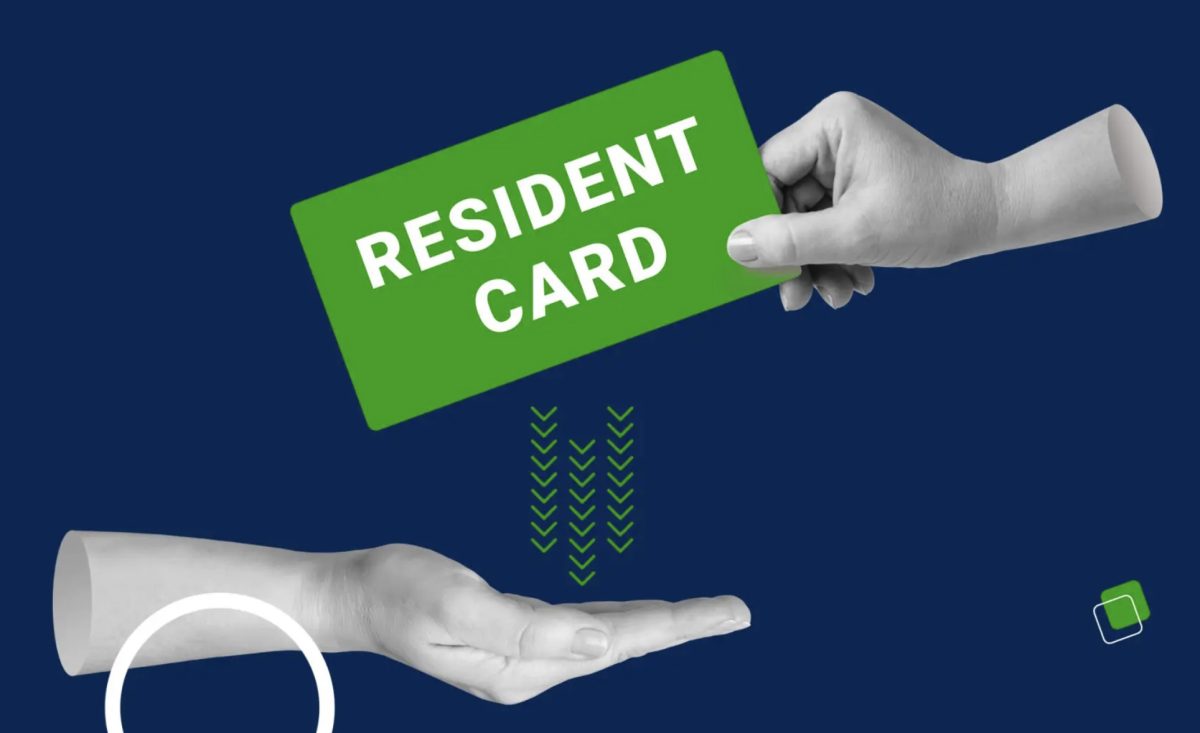
Green Card Sponsorship by Employer: What You Need to Know
The Department of State determined that the Fiscal year (FY) 2024 employment-based annual limit was set at 160,791. This higher cap resulted from the addition of unused family-sponsored visa numbers from FY 2023 to the employment-based allocation for FY 2024. This has expanded opportunities for employers to fill critical workforce gaps.
One of the most common employment-based options is the EB-3 Other Workers visa. This category is for unskilled and entry-level jobs that require less training or formal education. It allows employers to fill roles that they cannot easily fill with U.S. workers.
While the sponsorship process can take years, it leads to a U.S. green card. This card gives you the right to live and work in the country permanently. It also opens doors to more job opportunities, education and a stable future for your family.
What Is Employer Green Card Sponsorship
When a U.S. employer sponsors a green card, they agree to hire you for the long term and help you get permanent resident status. This is called employment-based immigration. It involves several stages that must be completed in the correct order.
To meet the U.S. workforce demand, the worldwide annual limit for employment-based preference immigrants is set at a minimum of 140,000. No single country can use more than 7% of the combined annual family-sponsored and employment-based visa limit while dependent areas are capped at 2%, or 7,320 visas.
The process starts with a step called the PERM Labor Certification. This step proves that there are not enough qualified U.S. workers for the job being offered. Once approved, the employer can move forward with the next stage.
The next major step is filing Form I-140 with the U.S. Citizenship and Immigration Services. This form is the official petition that connects you to the employer. Once that is approved, you move toward the green card interview stage.
Who Qualifies for Employment-Based Green Card Sponsorship
Employers can sponsor foreign workers when they cannot find enough local workers. This usually happens in industries with high demand and high turnover. Jobs in restaurants, warehouses, caregiving, hotels and manufacturing often fit this description.
Despite persistent labor shortages in many sectors, nonfarm payroll employment increased by 147,000 in June. This closely matched the prior 12-month average monthly gain of 146,000 and indicated steady but modest job growth amid ongoing hiring challenges.
The EB-3 Other Workers category does not require a college degree. Most employers expect basic English skills so you can follow instructions and work safely. This makes the category accessible to many people around the world.
Many of these jobs are entry-level. The main qualities employers look for are reliability, willingness to learn and the ability to commit to the job for at least one year. If you meet these qualities, you may be a strong candidate for sponsorship.
In July, the health care sector added 55,000 jobs, above the prior 12-month average monthly gain of 42,000, showing strong demand for workers amid ongoing labor shortages. Social assistance employment also increased by 18,000 driven by growth in individual and family services.
See current EB-3 job listings.
Step-by-Step Process: How Employer Sponsorship Works
1. Employer Starts the PERM Process
The PERM Labor Certification is the first official step. The employer must advertise the job locally and review any U.S. applicants who respond. If no qualified worker is found, the Department of Labor can approve the certification.
This step is important because it protects U.S. workers. It ensures that foreign workers are only hired when there is a real shortage. Employers must keep detailed records of their recruitment efforts.
Once the PERM is approved, the employer can move on to the next stage. This step alone can take many months due to required advertising periods and processing times.
2. Filing Form I-140
The employer then files Form I-140 with USCIS. This shows that they want you for the job and can pay your salary once you arrive. They must include evidence like tax returns or bank statements.
This step is also when you are officially linked to the job offer. Without the I-140, you cannot move forward in the process. If approved, you move to the visa waiting period.
Approval times vary. Sometimes it takes only a few months, but in other cases it can be longer. Employers can pay for premium processing to speed up this stage.
3. Visa Wait Time
After the I-140 is approved, you wait for your visa number. The EB-3 Other Workers category often has a backlog because demand is high. For many countries, the wait is at least 36 months.
The wait time depends on your country of birth and how many applications are ahead of you. The U.S. publishes a monthly visa bulletin so you can track your place in line. This bulletin is important for planning your next steps.
During the wait, you can prepare documents, improve your English and learn about living in the U.S. This makes the final transition easier once your visa becomes available.
4. Consular Interview or Adjustment of Status
If you are outside the U.S., you will attend an interview at a U.S. Embassy or Consulate. You must bring all required documents, including your medical exam results and police certificate. The officer will ask questions about your job and background.
If you are inside the U.S. and meet the requirements, you can apply for adjustment of status with Form I-485. This process avoids leaving the country for an interview. Not everyone however is eligible for this option.
Once the interview is passed and final approval is given, you receive your green card. You can then travel to the U.S. and begin working for your sponsoring employer.
Why Employers Sponsor Green Cards
Many U.S. industries face a constant shortage of reliable workers. Jobs that require physical work or long hours are often hard to fill locally. This makes foreign workers an important part of the labor force.
The U.S. Bureau of Labor Statistics reported that job openings remained high at 7.4 million in June. This underscored persistent labor shortages. Hires and total separations showed little change with quits holding steady at 3.1 million and layoffs or discharges unchanged at 1.6 million.
The U.S. Chamber of Commerce reports that worker shortages are expected to continue for years. Employers know that green card workers are more likely to stay long term. This helps businesses save money on training and reduce turnover.
For employers, sponsoring a green card is an investment in stability. It creates a more dependable workforce and builds loyalty between employer and employee.
How to Find a Job with Green Card Sponsorship
Not every U.S. employer offers sponsorship. When looking for a job, read listings carefully to see if they mention “visa sponsorship available.” This is a good sign that they are open to hiring foreign workers.
Working with a recruitment agency can also help. IAIC connects workers with employers who are already familiar with the sponsorship process. This makes it easier to match you with the right job.
Networking is another useful approach. Talking to others who have gone through the process can lead to job leads and helpful advice.
Read more helpful articles here.
Things to Know Before Applying
This is a long-term process that requires patience. It is not a temporary work permit, and you must be ready to commit. If you are not sure about moving to the U.S., it may not be the right choice.
You will be required to pass a medical exam. You must also pass background checks to show you have no serious criminal history. These steps are important for immigration approval.
Changing employers too soon after arrival can lead to your green card being revoked. The general expectation is that you will work for your sponsor for at least 12 months.
How To: Prepare for Employer Sponsorship
1. Build a Simple Resume
Focus on showing consistent work history. List your duties in a clear way that shows you can do the job. You do not need a complex or highly designed resume.
Basic English skills are helpful for interviews and job training. If you need improvement, consider taking a short course while waiting. Employers value the effort you put into communication.
A resume that is easy to read helps employers process your application quickly. Avoid unnecessary details and keep it professional.
2. Gather Required Documents
You will need your birth certificate, passport, and any education records. Police clearance from your home country is also required. Keep these documents in a safe place.
Having your paperwork ready before the employer starts the process can save time. Missing documents can delay the case by months. Make sure copies are clear and translated if necessary.
It is also helpful to have extra passport photos ready. You may need them at several stages of the process.
3. Be Honest During the Process
The immigration process has strict rules. If you provide false information, your case can be denied. In some cases, it can also lead to being banned from applying again.
Honesty builds trust with your employer and with U.S. immigration authorities. Even small mistakes should be corrected as soon as possible. This can prevent bigger problems later.
Remember that background checks are part of the process. Trying to hide information will almost always be discovered.
4. Stay Informed
Ask your employer or agency for regular updates. They can tell you when documents are filed and when approvals are received. This helps you plan for each stage.
Keep your own records of forms, dates, and receipts. This will make it easier to answer questions if needed. Staying organized can prevent unnecessary delays.
You can also check the U.S. visa bulletin each month. This helps you see how close you are to your interview date.
FAQ
-
Can I choose where I live in the U.S.?
No. Your green card is tied to your job location.
-
Do I need to pay the employer?
No. Employers must pay for their part of the process by law. You will pay your own government and attorney fees.
-
Can I bring my family?
Yes. Spouses and children under 21 can also get green cards.
-
What happens if I quit my job early?
Your green card may be revoked. You must work for your sponsoring employer for at least 12 months.
-
How long does the whole process take?
Usually between 36 and 48 months. Times vary by country and backlog.
The Bottom Line
Green card sponsorship by employer is a proven way to live and work in the U.S. permanently. The EB-3 Other Workers category makes this possible for many people with basic qualifications. It can be a life-changing opportunity.
The process requires patience and careful preparation. By understanding each stage, you can avoid mistakes and improve your chances of success. Many workers have used this pathway to create stable and rewarding lives in the U.S.
If you are ready to commit, now is the time to explore your options. With the right employer and preparation, you could be on your way to a new future.







